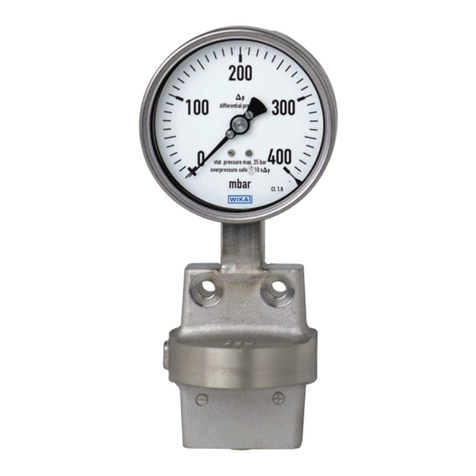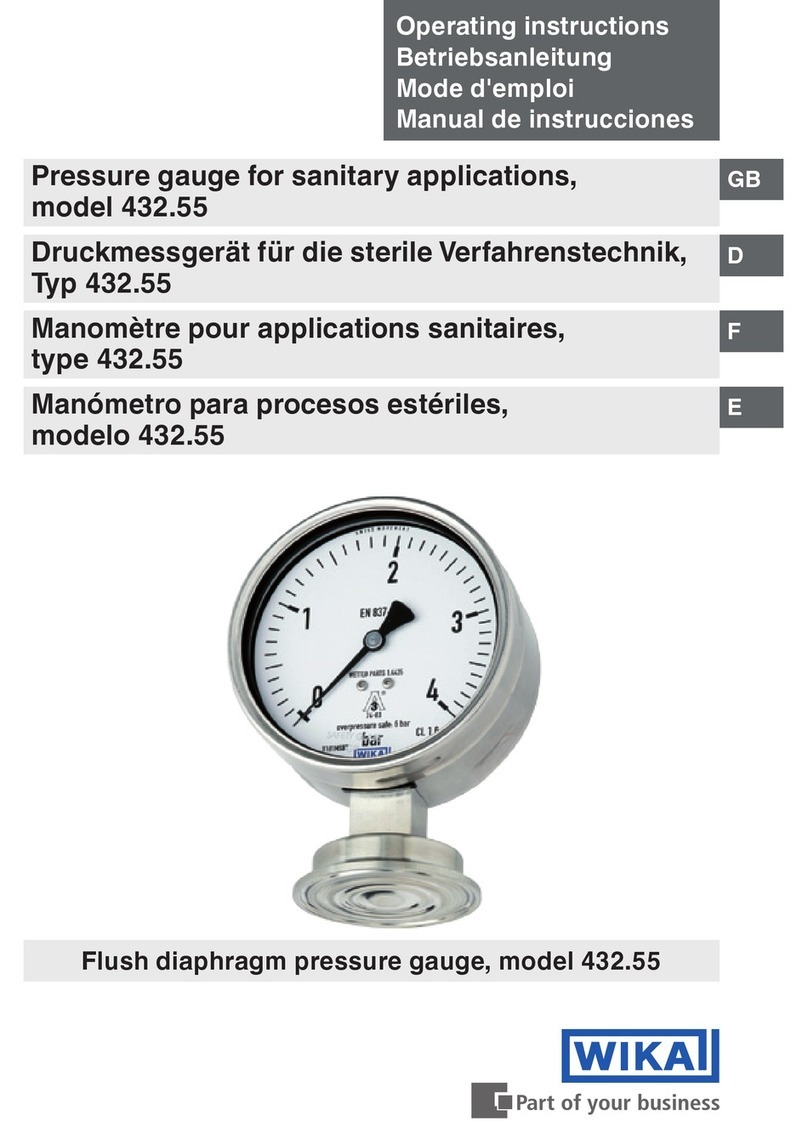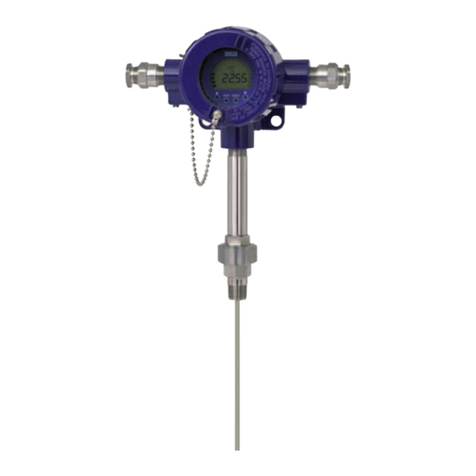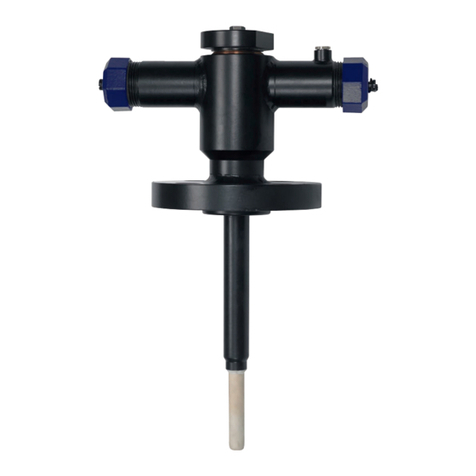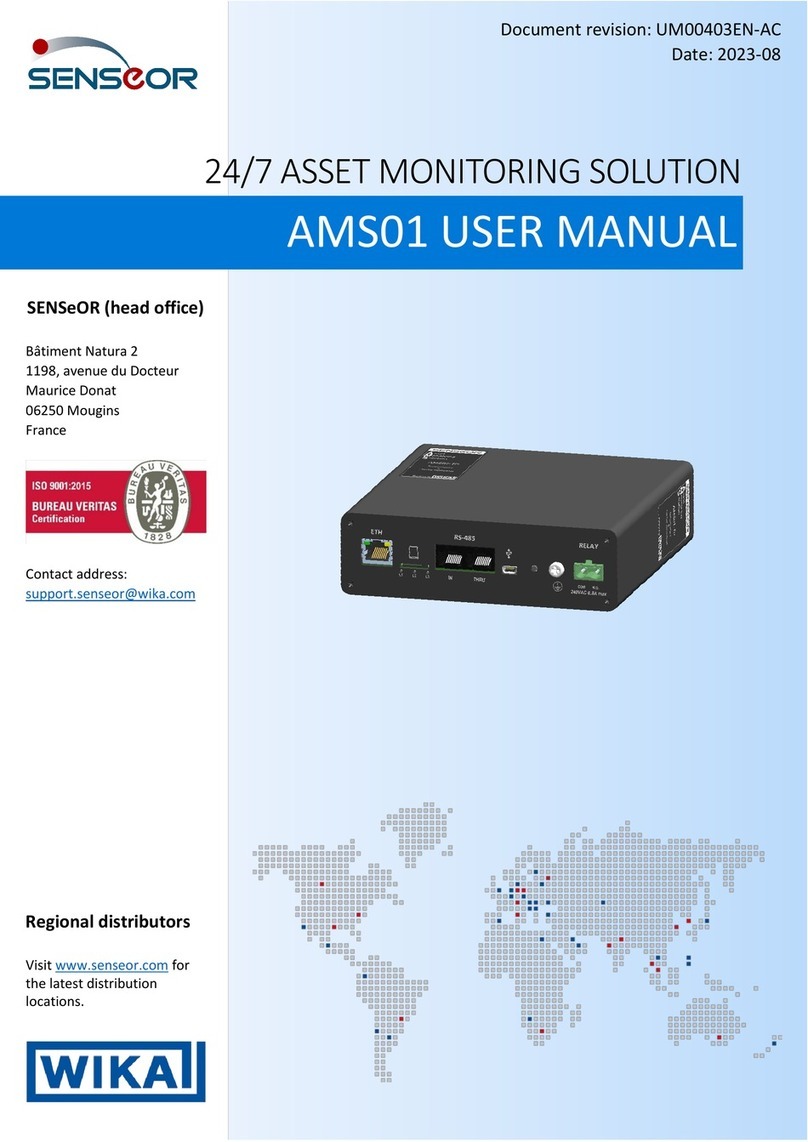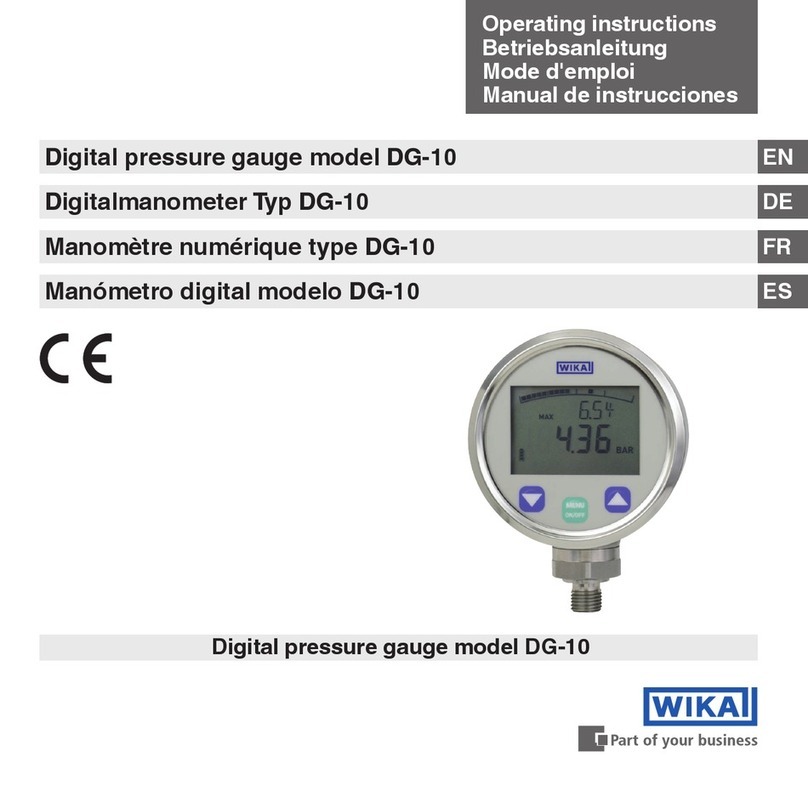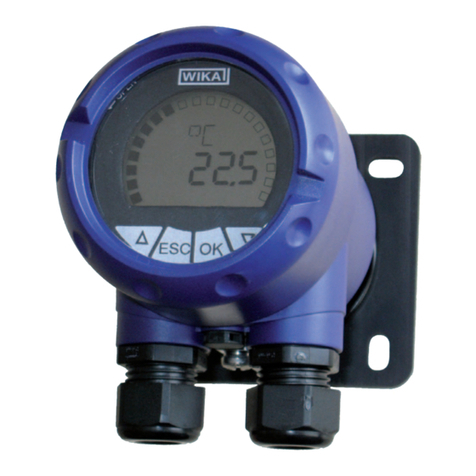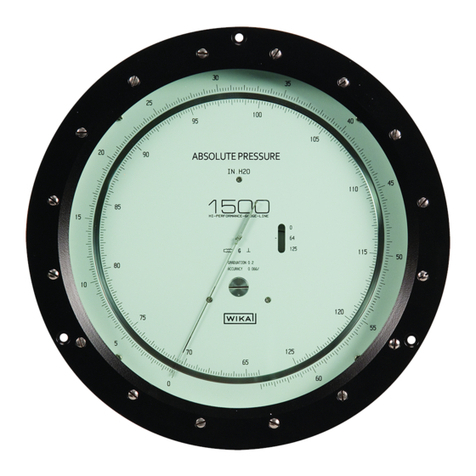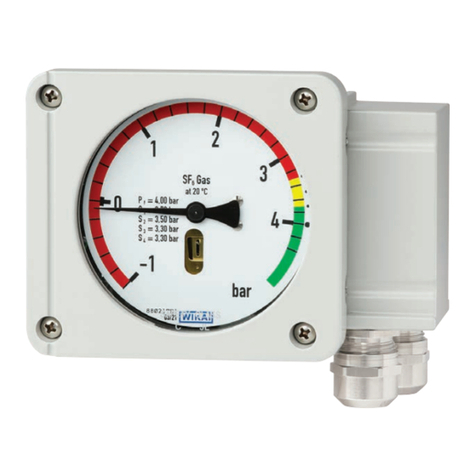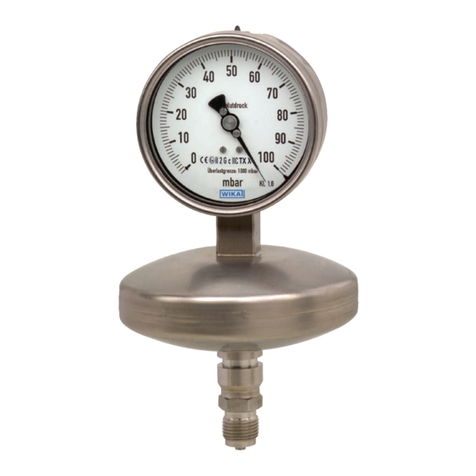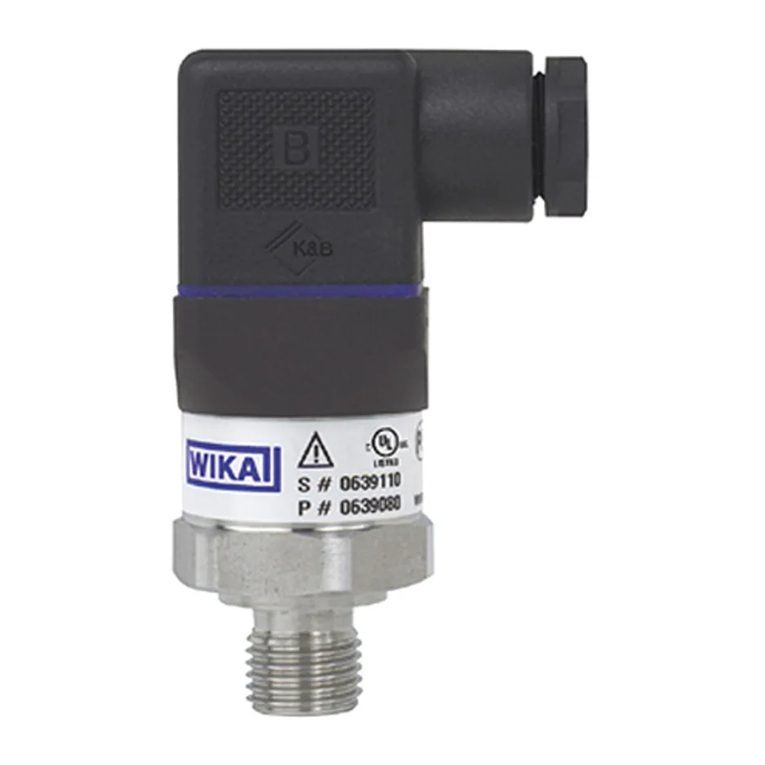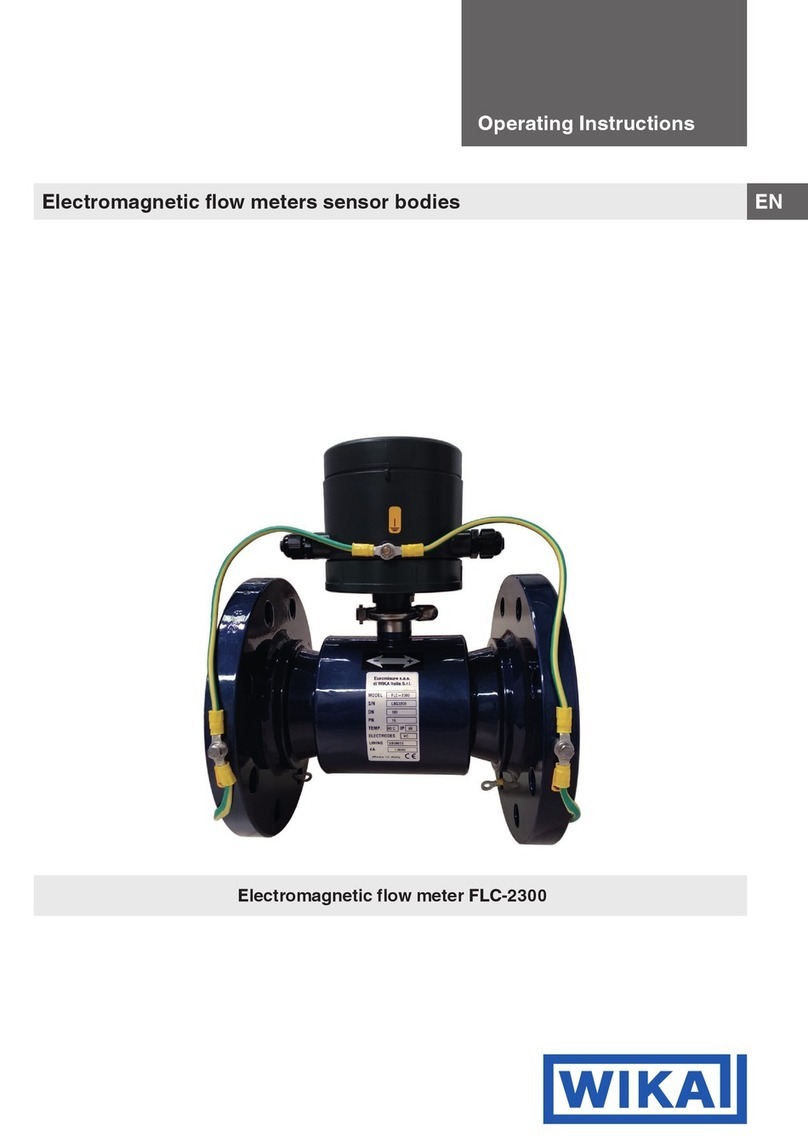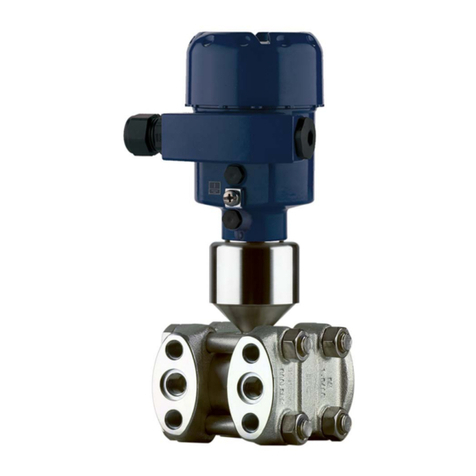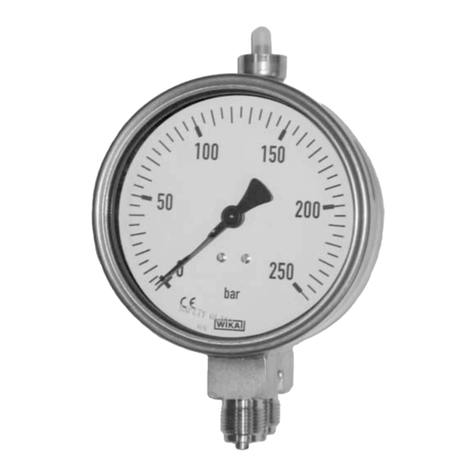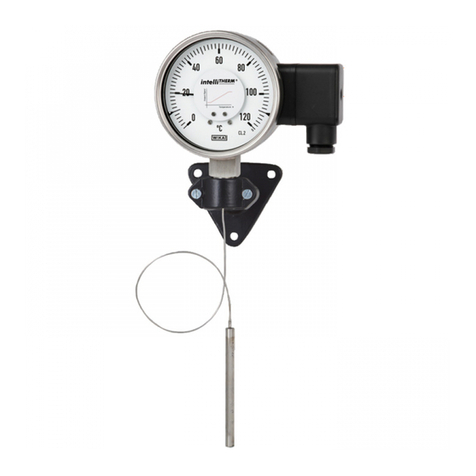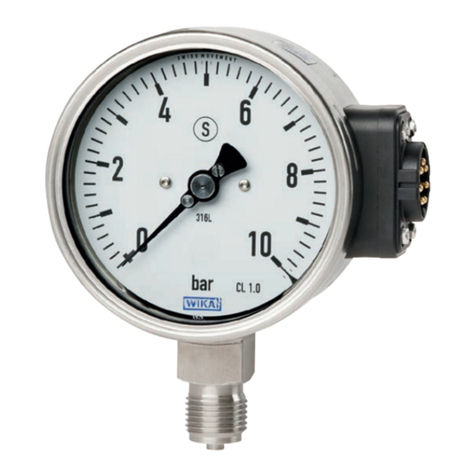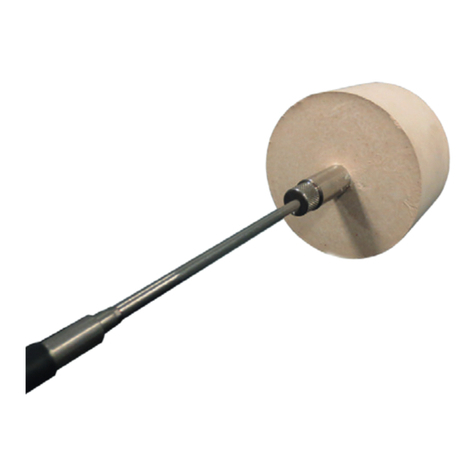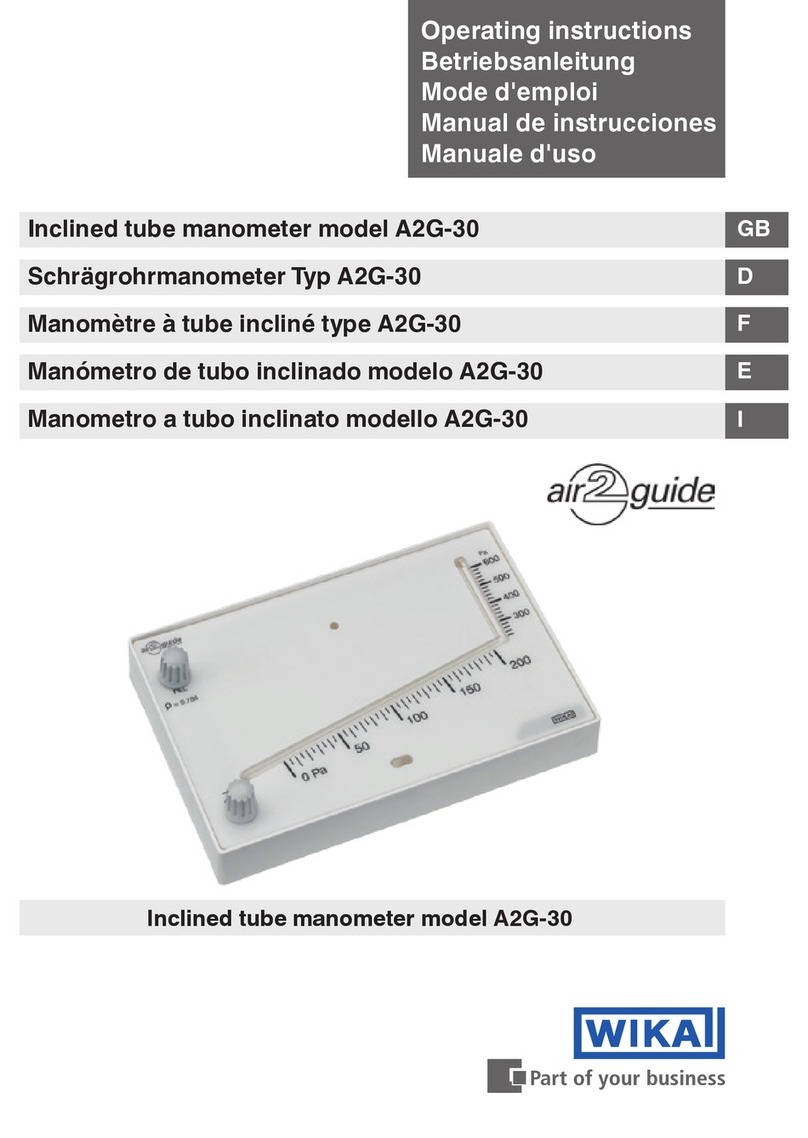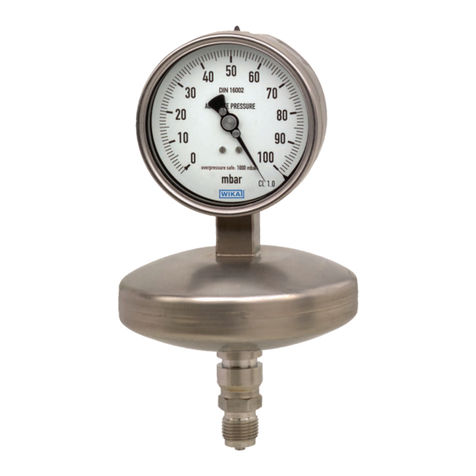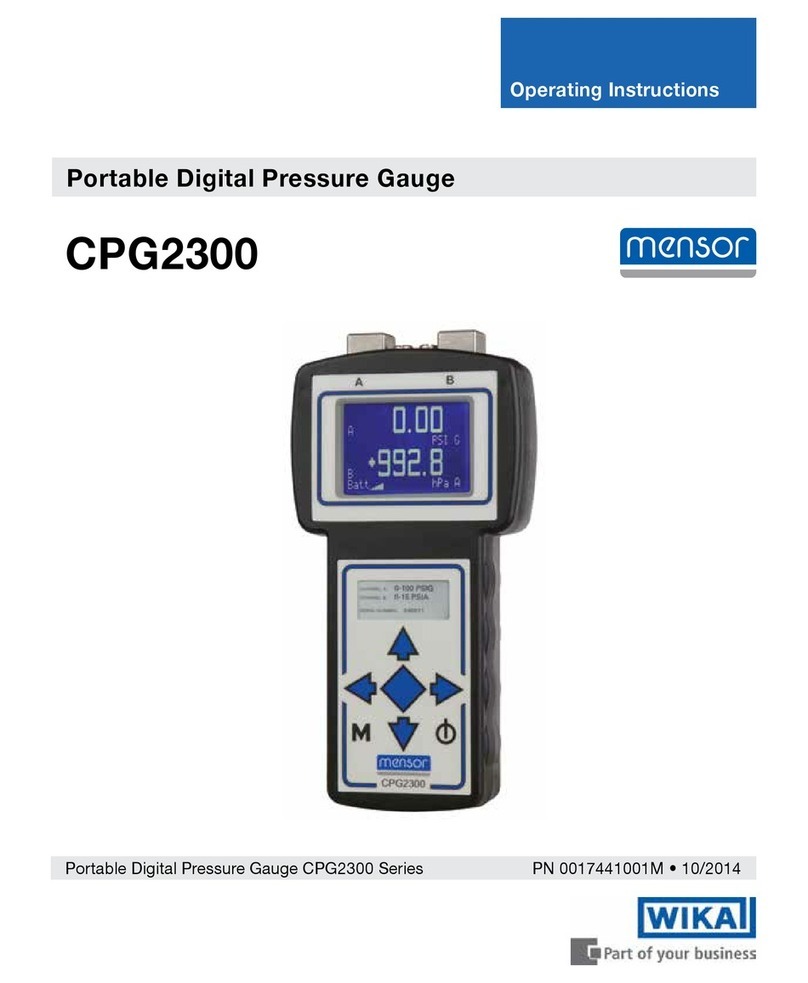Contents
1. Safety instructions
2. Description, Application
3. Mechanical connection
3.1 Special requirements for the installation point
4. Wiring details
5. To set desired value indicator
6. Ingress protection IP
7. Admissible ambient temperatures
8. Maintenance and servicing/Cleaning
9. Repairs
10. Power ratings
11. Overcurrent protection devices
12. Switch version appropriate to gauge type
and range
Electrical alarm contacts
with Magnetic snap-action or Sliding contacts
in pressure and temperature gauges
Pressure Gauge
Model 212.20.100
Operating
Instructions
GB
1. Safety instructions
The appropriate national safety regulations
(i.e. VDE 0100) must be observed when installing,
putting into operation and running these
instruments.
Do not work on gauge while under voltage.
Serious injuries and/or damage can occur should
the appropriate regulations not be observed.
The gauges are no safety accessories as defined by the
Pressure Equipment Directive 97 / 23 / EC.
Only appropriately qualified persons should work on these
instruments.
2. Description, Application
The built-in electric alarm contacts (magnetic snap-action or
sliding) are auxiliary current switches which open and close
the connected electrical circuits at the set points via the
contact arm, which is driven by the main instrument pointer.
3. Mechanical connection
According to the general technical regulations for pressure
gauges and temperature measuring instruments, respectively
(i.e. EN 837-2 or EN 13 190). When screw-fitting the gauges
the force required for this must not be applied through the
case or terminal box but just through the spanner flats (with
suitable tool) provided for this purpose.
Installation with
open-end wrench
With safety pattern gauges (see dial symbol k) you need to
pay attention to the fact that the free space behind the blow-
out back will be at least 15 mm.
3.1 Special requirements for the installation point
Instruments must be mounted in a location free from
vibration in order to avoid contact chatter and the resulting
increased wear. If the measuring point is not adequately
stable a measuring instrument holder should be used for
fastening (and possibly via a flexible capillary line). If the
pressure gauge is exposed to vibration or pulsating pressure
or both, then a liquid filled pressure gauge may provide
considerably better performance and readability.
Instruments should be protected against coarse dirt and
wide fluctuations in ambient temperature.
4. Wiring details
The electrical connections should be made by qualified
electricians. Connection details and switch functions are
given on the instrument type plate. Connection terminals and
ground terminal are appropriately marked.
The mains connection lines to be provided must be
dimensioned for maximum instrument power consumption
and comply with IEC 227 or IEC 245.
Power ratings and overcurrent protection devices see
overleaf.
5. To set desired value indicator
The desired value indicators for the alarm contacts are
adjustable over the adjustment lock in the window with
the aid of adjustment key (included in delivery; to be found
on standard gauges on the outside edge of the junction box).
The desired value indicators for the alarm contacts are
adjustable over the full range of the instrument. Switching
points shall be set in the ranges between 10 % and 90 % of
the scale, to ensure switching accuracy and long life of the
mechanical measuring system.
6. Ingress protection IP
The type of enclosure to EN 60 529 for protection against
external influences depends on the basic instrument and is
found in the respective data sheet.
7. Admissible ambient temperatures
The permissible ambient temperatures for alarm contacts is
-20 to +70°C. Where this span exceeds the permissible
temperature limits for the instrument to which the contacts
are fitted, the limits for the instrument apply (see data sheet).
8. Maintenance and servicing / Cleaning
The instruments require no maintenance or servicing.
The indicator and switching function should be checked
once or twice every 12 months. The instrument must be
disconnected from the process to check indication with a
pressure or temperature testing device.
The instruments should be cleaned with a damp cloth
moistened with soap solution. For cleaning inside the
instrument the mains power supply should be disconnected
by means of the plug box or plug connection.
It must be ensured that all the parts are dry before the power
is switched on again.
9. Repairs
Repairs are to be only carried out by the manufacturer or
appropriately trained personnel.
For further details see WIKA data sheet AC 08.01 or the type
sheet for the respective basic gauge.
Examples:
Thermometer
Model 55
Adjustment key
removable
Desired value
indicators
(red set pointer)
Adjustment lock
